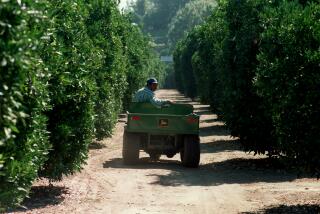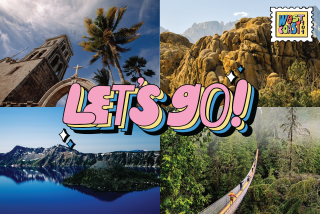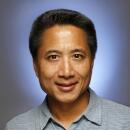Marking a Milestone
- Share via
It may not represent the birth of an entire nation. Nobody talks of issuing specially minted quarters to mark the event. And the party in its honor will last just three days, not a whole year.
But just as the 1976 U.S. Bicentennial spawned a mood of national celebration and reflection, Richard Alarcon hopes, the 200th anniversary of the founding of the San Fernando Mission will do the same for the modern valley that bears its name.
“There are key points in a community’s history when they should stop and take stock of where they came from, who they are and where they’re going,” said Alarcon, the Los Angeles city councilman who represents a large chunk of the San Fernando Valley. “This is one of those opportunities.”
Tonight, a three-day series of events kicks off to give Valley residents a chance to commemorate the Mission San Fernando, Rey de Espana, and to contemplate the area’s past, present and future. Part history lesson, part display of civic and cultural pride, the celebration will feature food for the body, mind, heart and soul.
Academicians will present papers on the life and times of the mission, including details of architectural discoveries brought to light by the Northridge earthquake. Artists and performers will stage everything from Aztec dances to bagpipe concerts in nearby Brand Park in a showcase of the Valley’s ethnic diversity. Affirming the mission’s religious roots, Cardinal Roger M. Mahony will deliver Mass in the mission’s church Sunday morning.
Planners have spent months organizing the event, sponsored by local companies, including The Times, and the city Department of Cultural Affairs, which provided $17,500. Hundreds of people are expected to attend a 1.5-mile parade scheduled for Saturday morning.
Dozens have already signed up for tonight’s opening event, a romantic evening in Brand Park’s Memory Garden where couples who were married at the mission, who are celebrating milestone anniversaries or who simply wish to renew their wedding vows will do so at a special ceremony.
“Everything’s coming together,” Alarcon said. “It’s going to be a very colorful, diverse representation of the history of the San Fernando Valley.”
It wasn’t always going to be that way, at least not in name. Originally, the “Celebration of the San Fernando Mission’s Bicentennial and the History of the San Fernando Valley” had simply been dubbed a celebration of the bicentennial--full stop.
Native Americans, asked to participate in the festivities, objected to the title, which they said glorified the arrival of oppression under Spanish invaders whose harsh treatment and foreign diseases devastated the native population.
“That’s not a [cause for] celebration to us,” said Rudy J. Ortega Jr., 22, a member of the Fernandeno / Tataviam tribe, which had settled in the area and came under the mission’s aegis.
“That’s our holocaust,” added Ortega, who uses the name Standing Bear.
In response, Alarcon and his 32-member organizing committee agreed to broaden the event’s official designation. “I had always envisioned that it would be a history of the San Fernando Valley, and the Native Americans pointed out that the title did not reflect that,” he said.
Ortega, his father and others declined a request to perform traditional dances in the mission’s courtyard, which they say is too close to the cemetery where nearly 2,500 Native Americans were interred and is considered sacred ground. Rather than partake in a memorial ceremony there, which the mission had wanted to mark with the release of 150 doves, local Native American groups opted instead to set up a “village” in Brand Park to tout Native American history and arts and crafts.
“Now we’re finally speaking out about our history,” said Ortega.
*
As for academics, they will have the chance to speak out about the mission’s history at a daylong symposium Saturday. Presenting monographs to be published by the Historical Society of Southern California, scholars from around the region will discuss the mission’s economy, the role of its friars and the native population, and the outpost’s future in the coming millennium.
More than 200 people have registered for the event. “The folks that are coming to the symposium are history buffs,” said Kevin Feeney, the mission’s curator.
Among the more interesting findings are new details of the mission’s architecture, which were revealed after the Northridge earthquake forced renovators to shave off the outer layer of stucco concealing the mission’s original adobe exterior. Experts discovered old chimneys, doors and windows, as well as signs that the building had started out as a single-story structure before a second floor was added.
Together, the presentations will provide “an overview of the past, the present and the future direction of the mission,” Feeney said. “Our focus was on the mission, its growth and development, and its place in the Valley.”
More to Read
Sign up for Essential California
The most important California stories and recommendations in your inbox every morning.
You may occasionally receive promotional content from the Los Angeles Times.











